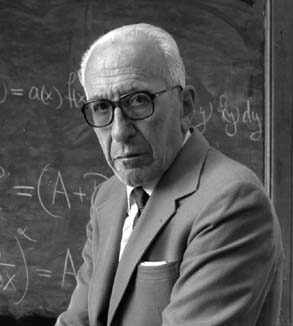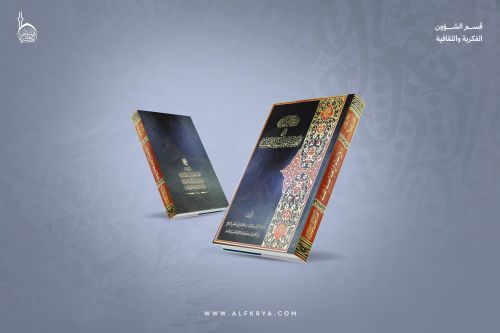

تاريخ الرياضيات

الاعداد و نظريتها

تاريخ التحليل

تار يخ الجبر

الهندسة و التبلوجي


الرياضيات في الحضارات المختلفة

العربية

اليونانية

البابلية

الصينية

المايا

المصرية

الهندية


الرياضيات المتقطعة

المنطق

اسس الرياضيات

فلسفة الرياضيات

مواضيع عامة في المنطق


الجبر

الجبر الخطي

الجبر المجرد

الجبر البولياني

مواضيع عامة في الجبر

الضبابية

نظرية المجموعات

نظرية الزمر

نظرية الحلقات والحقول

نظرية الاعداد

نظرية الفئات

حساب المتجهات

المتتاليات-المتسلسلات

المصفوفات و نظريتها

المثلثات


الهندسة

الهندسة المستوية

الهندسة غير المستوية

مواضيع عامة في الهندسة

التفاضل و التكامل


المعادلات التفاضلية و التكاملية

معادلات تفاضلية

معادلات تكاملية

مواضيع عامة في المعادلات


التحليل

التحليل العددي

التحليل العقدي

التحليل الدالي

مواضيع عامة في التحليل

التحليل الحقيقي

التبلوجيا

نظرية الالعاب

الاحتمالات و الاحصاء

نظرية التحكم

بحوث العمليات

نظرية الكم

الشفرات

الرياضيات التطبيقية

نظريات ومبرهنات


علماء الرياضيات

500AD

500-1499

1000to1499

1500to1599

1600to1649

1650to1699

1700to1749

1750to1779

1780to1799

1800to1819

1820to1829

1830to1839

1840to1849

1850to1859

1860to1864

1865to1869

1870to1874

1875to1879

1880to1884

1885to1889

1890to1894

1895to1899

1900to1904

1905to1909

1910to1914

1915to1919

1920to1924

1925to1929

1930to1939

1940to the present

علماء الرياضيات

الرياضيات في العلوم الاخرى

بحوث و اطاريح جامعية

هل تعلم

طرائق التدريس

الرياضيات العامة

نظرية البيان
Alberto Pedro Calderón
المؤلف:
Alberto Calderón
المصدر:
C. R. Acad. Sci. Sér. Gén. Vie Sci. 1 (6) (1984)
الجزء والصفحة:
...
17-1-2018
594
Died: 16 April 1998 in Chicago, USA

Alberto Calderón had part of his early education in Switzerland, then attended secondary school in Mendoza, Argentina. He studied civil engineering at the University of Buenos Aires and graduated in 1947.
After graduating he became an assistant to the Head of Electric Circuit Theory in the School of Engineering at the University of Buenos Aires and began research in mathematics under the supervision of Alberto González Domínguez. In 1948 Antoni Zygmund visited the University of Buenos Aires and began to discuss various problems with Calderón. Carbery writes in [4]:-
... Zygmund posed Calderón a question and the puzzled Calderón replied that the answer was contained in Zygmund's own book Trigonometric Series. Zygmund disagreed: what transpired was that Calderón only ever read the statements of the results, preferring to give his own reasoning and proofs... . One of these proofs gave a highly original answer to Zygmund's question. This originality was to be the hallmark of Calderón's work in the years to follow.
Calderón was awarded a Rockefeller Scholarship to enable him to undertake research at the University of Chicago and this he did, having Zygmund supervise his doctorate which was awarded in 1950. From 1950 to 1953 he was an associate professor at Ohio State University, then he spent 1954-55 at the Institute for Advanced Study at Princeton. After spending the years 1955-59 at Massachusetts Institute of Technology, he returned to Chicago in 1959 when he was appointed professor of mathematics there.
After serving as chairman of the Mathematics Department at Chicago from 1970 to 1972 he left for a position of professor of mathematics at Massachusetts Institute of Technology. However, he only spent three years at MIT before returning to the University of Chicago in 1975 where he remained as University Professor of Mathematics until he retired in 1985.
The Calderón-Zygmund theory changed the direction of mathematical analysis, each bringing a distinctive flavour to the theory [4]:-
Zygmund, a classical analyst, became interested in analogues of the conjugate function operator (that which takes the real part of an analytic function to its imaginary part) in higher dimensions, purely for reasons of intellectual interest. Calderón, on the other hand, with his background as an engineer, saw that such operators held an important key to understanding the theory of partial differential equations.
Out of these differing points of view was born one of the predominant intellectual movements in 20th century mathematics: the Calderón-Zygmund theory of singular integral operators and the Calderón-Zygmund school devoted to their study. In particular Calderón wanted to describe a calculus for elliptic differential operators and, from this beginning in the 1950s, the theory of pseudodifferential operators grew in the 1960s.
In 1958 Calderón published one of his most important results on uniqueness in the Cauchy problem for partial differential equations. In 1989 he was awarded the Steele Prize by the American Mathematical Society (fundamental research work category) for this outstanding contribution. In 1991 he was awarded the National Medal of Science and again he work on uniqueness in the Cauchy problem was cited. He was awarded the National Medal of Science [2]:-
... for his ground-breaking work on singular integral operators leading to their application to important problems in partial differential equations, including his proof of uniqueness in the Cauchy problem, the Atiyah-Singer index theorem, and the propagation of singularities in nonlinear equations...
These honours were but two from a long list. The American Mathematical Society also awarded Calderón their Bôcher Prize in 1979 and he had previously been American Mathematical Society Colloquium Lecturer in 1965 when he spoke in Ithaca on Singular Integrals.
Argentina gave many honours to Calderón. These included the Provincia de Sante Fe Prize (1969), the Konex Prize (1983), the Union Carbide Prize (1984) and the Consagración Nacional Prize (1989).
Calderón was elected to the American Academy of Arts and Sciences (1957), the National Academy of Exact, Physical and Natural Sciences of Argentina (1959), the National Academy of Sciences of the United States (1968), the Royal Academy of Sciences of Spain (1970), The Latin American Academy of Sciences of Venezuela (1983), the French Academy of Sciences (1984) and the Third World Academy of Sciences (1984).
In [2] the influence of his work is described:-
Calderón's influence on analysis and related areas is due in large part to the many methods that he invented and perfected. In modern Fourier analysis, theorems are usually less important than the techniques developed to prove them. Calderón's techniques have been absorbed as standard tools of harmonic analysis and are now propagating into nonlinear analysis, partial differential equations, complex analysis, and even signal processing and numerical analysis.
Although this influence will continue to be felt, despite writing around 80 mathematical papers, Calderón never wrote a monograph on his highly original ideas. This lack of a definitive source has meant that the treatises wich cover his fundamental work have been written by others. Recent directions which arise from Calderón's theories are described in [3].
Carbery [4] describes Calderón's character:-
Alberto Calderón was a shy, courteous and modest man who, once comfortable, would open up and entertain his companions with ease. ... I will not forget the kind, considerate and elegant gentleman, cigarette in hand, often seen walking quietly down the corridors of Eckhard Hall, in the University of Chicago.
Articles:
- Alberto Calderón (French), C. R. Acad. Sci. Sér. Gén. Vie Sci. 1 (6) (1984), 514-515.
- Alberto P Calderón receives National Medal of Science, Notices Amer. Math. Soc. 39 (4) (1992), 283-285.
- A Carbery, Harmonic analysis of the Calderón-Zygmund school, 1970-1993, Bull. London Math. Soc. 30 (1) (1998), 11-23.
- A Carbery, Obituary : Alberto Calderón : Mathematics applied, The Guardian (May, 1998).
- R R Coifman and R S Strichartz, The school of Antoni Zygmund, in A century of mathematics in America III (Providence, RI, 1989), 343-368.
 الاكثر قراءة في 1920to1924
الاكثر قراءة في 1920to1924
 اخر الاخبار
اخر الاخبار
اخبار العتبة العباسية المقدسة

الآخبار الصحية















 قسم الشؤون الفكرية يصدر كتاباً يوثق تاريخ السدانة في العتبة العباسية المقدسة
قسم الشؤون الفكرية يصدر كتاباً يوثق تاريخ السدانة في العتبة العباسية المقدسة "المهمة".. إصدار قصصي يوثّق القصص الفائزة في مسابقة فتوى الدفاع المقدسة للقصة القصيرة
"المهمة".. إصدار قصصي يوثّق القصص الفائزة في مسابقة فتوى الدفاع المقدسة للقصة القصيرة (نوافذ).. إصدار أدبي يوثق القصص الفائزة في مسابقة الإمام العسكري (عليه السلام)
(نوافذ).. إصدار أدبي يوثق القصص الفائزة في مسابقة الإمام العسكري (عليه السلام)


















